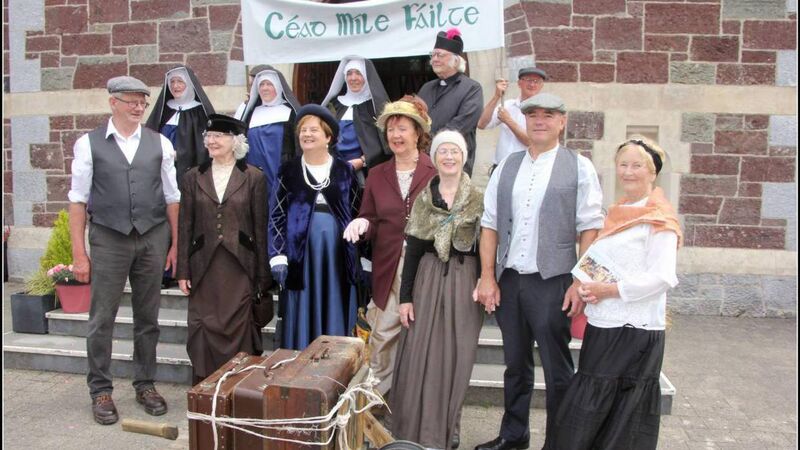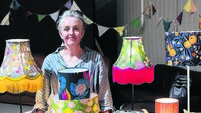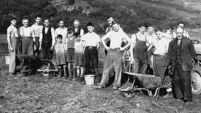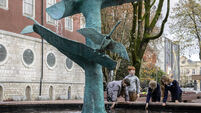Nun Frances’ epic journey from Crimean War to Carrigtwohill

The bloody Crimean War was being bitterly fought, with brutal and deadly consequences.
The nurses had departed London the previous December for the boat trip to the Crimea. Frances and another helper, with just one trained nurse, tried to care for 1,000 injured, maimed, and dying soldiers. Built to house perhaps 900 patients, by the spring of 1855 the building housed 3,000 patients.
Born at Stoke Rochford in Lincolnshire, England, in 1832, Frances’s father and grandfather were Anglican clergymen. There were eight children in her family and her mother Louisa was left to rear them after the death of Frances’ father, Rev Henry Taylor, in 1842.
From an early age, young Frances displayed great kindness and care for the poor and the sick she encountered. After Henry’s death, the family moved to London. Poverty, squalor, hunger, prostitution, illiteracy, rampant epidemics, and a ‘society’ that seemed to turn a blind eye to this underbelly of civilisation; all these were witnessed and abhorred by Frances.
With her sisters, Emma and Charlotte, she joined Priscilla Seldon’s Anglican Sisterhood ‘the Sisters of Mercy of the Holy Trinity’.
After training in nursing in Bristol, Frances and Charlotte helped combat the then rampant scourge of cholera. Once the threat abated, Frances returned home. She did voluntary work in slum areas and London workhouses, helping destitute and oft times starving homeless people.
During her 10 months in the Crimea, Frances worked with Florence Nightingale - whom she found to be a little bit too authoritarian! She knew rules and regulations had to be obeyed, but Frances always wanted flexibility and not rigidity in dealing with the sick and mortally wounded soldiers - many of them Irish.
She worked alongside 15 Catholic Mercy nuns, and their holiness and Christianity made a deep impression on her. So too did the faith of the many Irish soldiers amongst the wounded and dying. For many of these, Frances wrote what in many cases was ‘their last letter home’.
While in Scutari, Frances Taylor, aged 23, converted to Catholicism. On her return to England, she saw a huge need for some kind of religious Order that would be solely devoted to caring for the poorest of the poor.
A prolific writer of books and periodicals, one of her ‘contributors’ was Lady Georgina Fullerton, a granddaughter of the fifth Duke of Devonshire. She too was a convert and became a friend, advisor and patron of Frances. At her suggestion, Frances visited Ireland frequently between 1864 and 1867, investigating the conditions in Irish workhouses and institutions - both women had encountered so many Irish living in abject poverty in London slums.
Irish Homes And Irish Hearts, published in 1867, is a detailed account of her journeys in this country - she spent some time in Kinsale. Frances was still trying to find what she was looking for.
In 1868, she visited several European countries, including Poland, where Edmund Bojanowski had founded an Order that lived, not in a Community, but out amongst the people in need - a concept close to her heart.
After a lot of discernment and real ‘soul-searching’, Frances Taylor took the brave step, in 1869, of establishing the Poor Sisters of the Mother of God - known in later years as SMG.
In 1874, why did a lady from Carrigtwohill in Co. Cork write to Frances, or Mother Magdalen as she was then known, asking her to come to East Cork? Maybe Crimean War veterans - thousands of Irishmen fought there - told of the kindness and affection displayed by her? We don’t know; but on May 3, 1874, Fr Richard Seymour PP of Carrigtwohill, wrote to Mother Magdalen:
Though the Order was only a few years old, Mother Magdalen was anxious and willing to spread the Good News and accompany the Word of God with real Christian action ‘on the ground’. The offer of ‘a hundred pounds and the grass of a cow’ was a generous welcome from a kind pastor who had been in the East Cork parish since 1849.
He, like the Sisters in London, had seen poverty, disease and hunger on his own doorstep and was forever trying to help his flock.
No time was lost as Mother Magdalen, on her visits here, knew and understood what conditions were like in post-famine Ireland. So, on the feast of St Aloysius, June 21, 1875, -the longest day of the year - Mother Magdalen Taylor and her companions, Sister Agnes Manderson and Sister Francis Murphy, arrived at the train station in Carrigtwohill, having journeyed from London.
For Frances, this journeys-end was far different from the awful scenes of 20 years earlier in Turkey. The people of Carrigtwohill came in their hundreds bearing a huge ‘Céad Míle Fáilte’ banner. Though Mother Magdalen and her companions had no Irish, they were overwhelmed by the sheer happiness and delight of the ‘poorest of the poor’ at their arrival.
As they walked from the station to the village, children threw rose petals at their feet. Fr Seymour was delighted and so happy to have the Poor Servants of the Mother of God in their midst. The convent was built.
In 1876, a two-day bazaar was held at Barryscourt Castle for ‘the foreign nuns’ who soon became an integral part of the Carrigtwohill parish. Interestingly, among the items on offer at the bazaar were four little cameos donated by Pope Pius IX.
Their secret - well, not really a secret - after 150 years, is to combine the love of God with the love of those who need it most.
The Christian messages of ‘love thy neighbour as thyself’, and ‘a friend in need is a friend indeed’, and the prayerful manner in which the Poor Servants of the Mother of God, in Carrig and all over the world, put these principles into action every day, is truly what the venerable Frances Taylor wanted, and still wants for us.
On June 21, an emotional and joyful re-enactment of the Sisters’ arrival in Carrigtwohill was carried out. It was a celebration and a sincere ‘Thank-You’ for a century and a half of giving, caring and praying.
Mother Magdalen was always positive even in the face of adversity -a message of hope for today’s world.







 App?
App?







